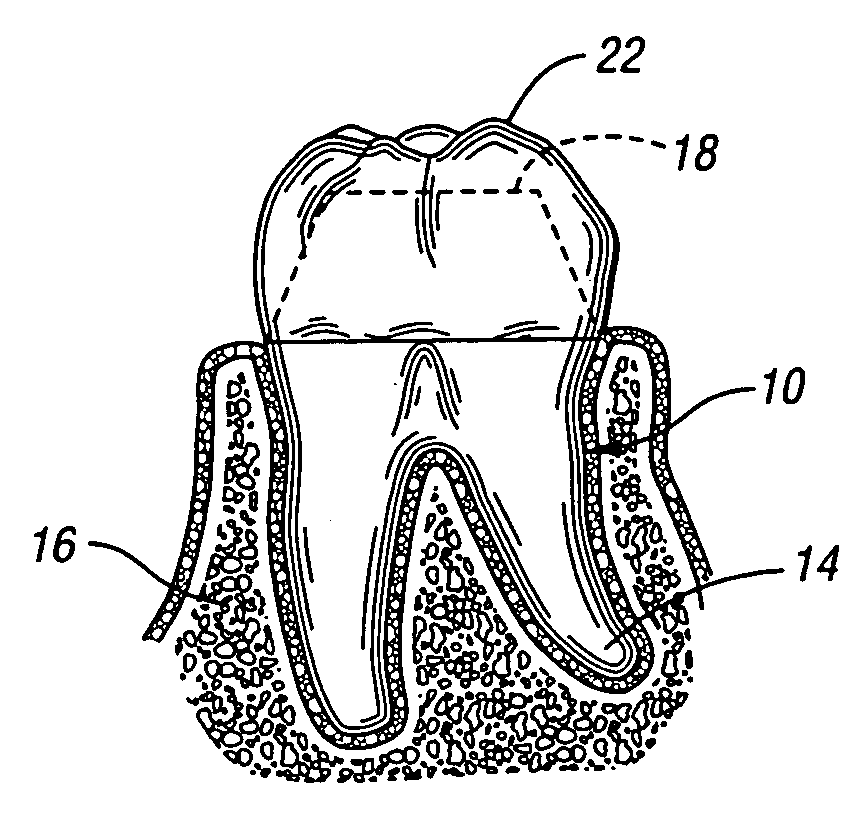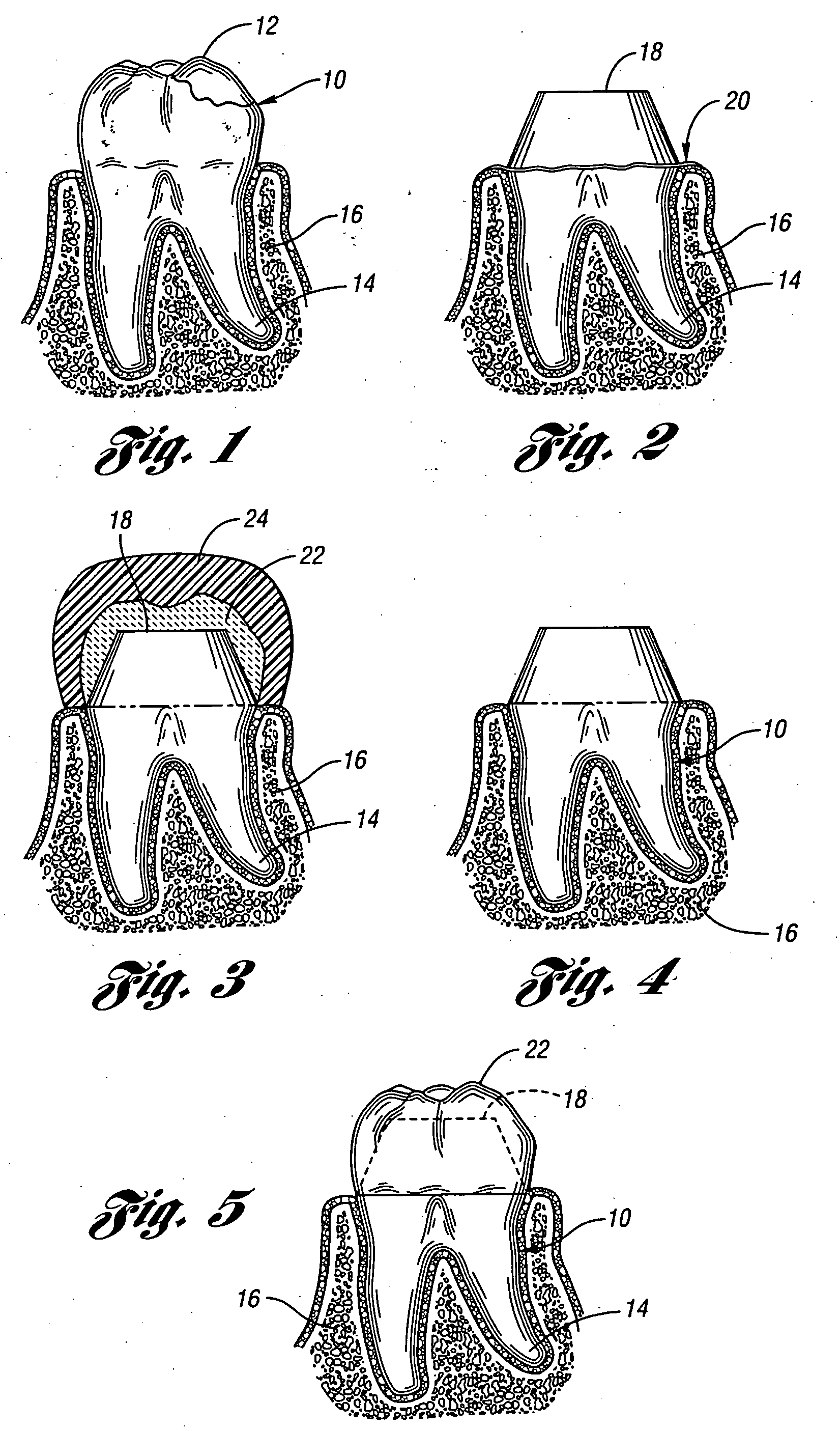Method for creating a temporary dental crown
a dental crown and temporary technology, applied in the field of dental crown or bridge procedure, can solve the problems of time-consuming and inability to obtain the proper final impression of the tooth, and achieve the effect of reducing the overall time required for the procedure and reducing the time required
- Summary
- Abstract
- Description
- Claims
- Application Information
AI Technical Summary
Benefits of technology
Problems solved by technology
Method used
Image
Examples
Embodiment Construction
)
[0021]FIG. 1 shows a tooth 10 before crown preparation. It will have been determined that the tooth 10 is decayed or otherwise defective at the upper portion 12. This defective portion necessitates removing the defective portion and preparing it for the application of a permanent replacement. FIG. 1 also shows tooth roots 14 and surrounding gum tissue 16. The gum tissue 16 surrounds the entire perimeter of the tooth roots 14.
[0022] Before preparing a permanent replacement for the defective portion, a preliminary impression mold 24 of the tooth with the defective portion must be formed. The preliminary impression mold 24 is made using wax, plastic, polyvinylsiloxane or other suitable materials. The preliminary impression mold 24 is formed by placing preliminary impression material over the defective tooth 10 thereby forming an impression in the shape of the defective tooth 10.
[0023]FIG. 2 shows the tooth 10 after it has been prepared for receiving a crown. The defective portions a...
PUM
 Login to View More
Login to View More Abstract
Description
Claims
Application Information
 Login to View More
Login to View More - R&D
- Intellectual Property
- Life Sciences
- Materials
- Tech Scout
- Unparalleled Data Quality
- Higher Quality Content
- 60% Fewer Hallucinations
Browse by: Latest US Patents, China's latest patents, Technical Efficacy Thesaurus, Application Domain, Technology Topic, Popular Technical Reports.
© 2025 PatSnap. All rights reserved.Legal|Privacy policy|Modern Slavery Act Transparency Statement|Sitemap|About US| Contact US: help@patsnap.com


